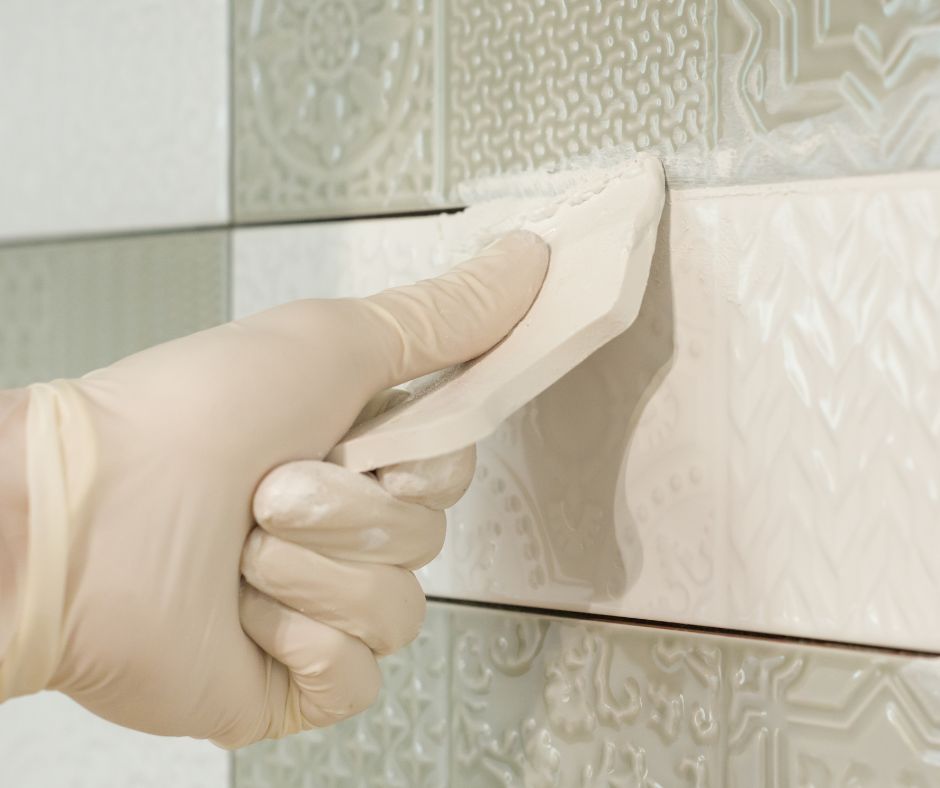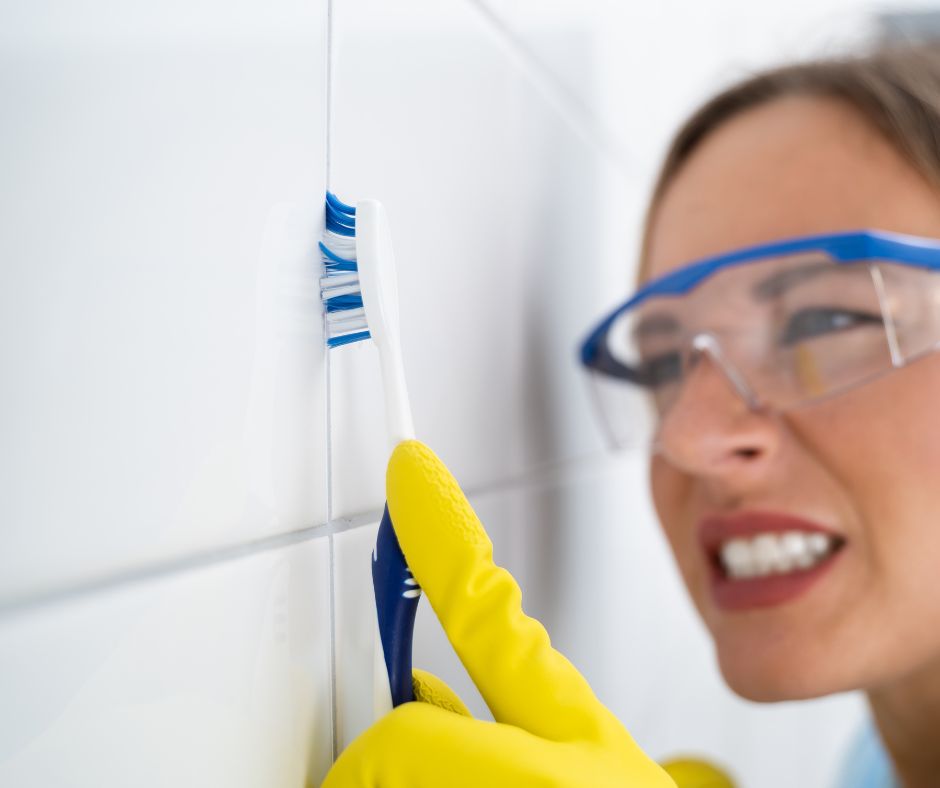Have you noticed unsightly holes appearing in your shower tile grout?
Don’t worry! While these imperfections may detract from your shower's visual appeal, they are not catastrophic issues. It's vital to tackle these problems quickly to prevent more extensive damage down the line.
The good news is that repairing these holes is easier than you might think!
This comprehensive guide will take you through a detailed, step-by-step process to efficiently repair holes in your shower tile grout. Moreover, we will explore the common causes of grout damage and provide effective preventive measures to help you avoid similar issues in the future.

Revitalize Your Shower: Step-by-Step Instructions for Repairing Holes in Tile Grout
Addressing grout holes might seem daunting at first glance, but this task is actually quite straightforward and manageable. Let me guide you through the essential steps to restore your shower's pristine and inviting appearance.
#1 Gather Your Essential Grout Repair Tools for an Efficient Repair Experience
Before you begin your grout repair project, it’s crucial to collect all the necessary supplies to ensure the task is efficient and effective. Here’s a detailed list of items you will need to guarantee a successful outcome:
- Specialized grout removal tools
- Caulk gun
- Grout that matches your existing tile color
- Grout float for smooth application
- A sponge for cleanup
- A bucket of water for rinsing
- Masking tape for clean edges
Always remember to wear gloves and safety glasses to protect yourself while working. Organizing all your tools in advance will streamline the entire process, making it less stressful and more enjoyable.
Also Read: Epoxy Grout VS Cement Grout
#2 Prepare Your Shower Area Thoroughly for a Successful Grout Repair
With your tools ready, it’s time to meticulously prepare the area for a successful repair. Start by applying masking tape around the grout lines where the holes are located.
This critical step helps secure the new grout in place, ensuring a clean and professional finish that will significantly enhance the appearance of your shower.
Next, carefully use your grout removal tool to extract the old, damaged grout. Exercise caution to avoid scratching the tiles, and if you're working in a shower environment, be careful not to damage the waterproof membrane beneath the tiles. This preparation is essential, as it creates a clean and stable surface for the new grout to adhere effectively.
Also Read: Why Grout Gets Stained And Damaged
#3 Clean Your Grout Workspace Thoroughly Before Applying New Grout
After meticulously removing the old grout, it’s time to clean the workspace thoroughly. Use a slightly damp cloth to wipe down the surface, effectively removing all dust and debris left from the grout removal process.
It’s crucial to allow the area to dry completely before applying the new grout; a dry surface significantly improves the adhesion of the new grout, ensuring a long-lasting and durable repair.
#4 Skillfully Apply New Grout for a Stunning, Flawless Finish
Now comes the exciting part! Prepare your grout according to the instructions provided on the packaging.
Aim for the perfect consistency—not too watery and not overly thick. Utilize your grout float to apply the new grout over the holes, ensuring that you push it in at an angle. This technique is vital as it helps fill all gaps and creates a smooth, even finish that dramatically enhances the overall look of your shower.
Once the holes are filled, use the float to level the surface and remove any excess grout, ensuring a tidy and professional appearance. Taking the time to apply the grout skillfully will significantly improve the visual appeal of your shower.
#5 Carefully Wipe Away Excess Grout for a Polished, Professional Look
After allowing the grout to set for a brief period, take your damp sponge and carefully wipe away any excess grout.
Be sure to rinse the sponge frequently to avoid letting grout dry on it, as this can complicate the cleaning process. This step requires patience, but achieving a polished, professional appearance is well worth the effort. Take your time to ensure everything is perfect before allowing it to dry completely and removing the masking tape.
Also Read: Regrouting Your Bathroom Grout
#6 Optional: Seal the Grout to Enhance Longevity and Durability
If you're keen on boosting the longevity of your grout, consider applying a grout sealer.
While this step isn’t mandatory, it can provide significant protection against moisture and stains, thereby extending the life of your repair. If you choose to seal the grout, be sure to wait a few days for it to fully cure before applying the sealer.
Follow the manufacturer’s instructions for optimal results to add an extra layer of protection, keeping your grout looking fresh and vibrant for years to come.

Identify the Causes of Grout Damage and Implement Effective Preventive Measures
Have you ever paused to consider what leads to those unsightly holes in your grout in the first place?
The primary culprits are typically moisture and harsh cleaning methods. Grout is inherently porous and can deteriorate over time, especially if it isn’t adequately sealed. Moreover, showers are exposed to constant water and frequent cleaning, which can exacerbate the issue.
Additionally, the natural settling of the house can lead to minor shifts that create cracks or holes in the grout.
To prevent future holes from developing, consider sealing your grout after installation or repair.
Using gentle cleaning products can also prolong the life of your grout. Avoid harsh chemicals that can degrade grout over time.
Regularly inspecting your shower grout for any signs of damage can also be beneficial.
Addressing any issues as soon as they arise will help prevent them from worsening into more significant problems, maintaining the integrity of your tiles.
Proven Tips for Achieving Successful Grout Repair
Repairing holes in your shower tile grout can easily be accomplished on your own, and doing so can help prevent more significant, costly issues from arising in the future.
However, if you prefer to have professionals manage this task, we are here to assist you. We can efficiently complete the regrouting process, relieving you of the hassle while ensuring a high-quality job.
Regardless of your choice, addressing those holes will help maintain your shower's functionality and aesthetic appeal for years to come!
Frequently Asked Questions
What Steps Should You Take If Your Contractor Left Holes in Your Grout?
If you’ve recently undergone renovations in your bathroom and discovered holes in the grout, it’s essential to contact your contractor without delay. A reputable professional should ensure that no holes or imperfections remain in the grout.
Most reliable contractors will be more than willing to return and rectify these issues promptly, ensuring your shower is in perfect condition.
How to Effectively Repair Pin Holes in Grout?
To address pin holes in the grout, start by cleaning the area thoroughly and lightly dampening the surrounding grout. Next, press a small amount of grout into the holes, smoothing the patched area with your finger for a seamless finish that blends perfectly with the existing grout.
What’s the Correct Process for Repairing Missing Grout in the Shower?
Fixing missing grout is quite similar to repairing holes. Begin by ensuring the area is thoroughly cleaned, then apply new grout to the affected spots. Use your grout float to smooth it out, ensuring a level finish. Finally, remove any excess grout and allow it to dry completely for optimal results, guaranteeing the long-term durability of your work.

The Article: Holes in Shower Tile Grout? Effective Solutions Inside! first appeared on https://writebuff.com.
The Article Effective Solutions for Holes in Shower Tile Grout Was Found On https://limitsofstrategy.com
The Article Holes in Shower Tile Grout: Effective Repair Solutions First Appeared ON
: https://ad4sc.com




Comments are closed